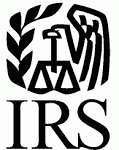 The IRS has issued the 2017 “Required Amendments List” for qualified plans. This is the second list issued since the IRS eliminated the five-year remedial amendment cycle and significantly curtailed the favorable determination letter program for individually designed plans. The IRS will issue a new List each year.
The IRS has issued the 2017 “Required Amendments List” for qualified plans. This is the second list issued since the IRS eliminated the five-year remedial amendment cycle and significantly curtailed the favorable determination letter program for individually designed plans. The IRS will issue a new List each year.
This new List, set forth in Notice 2017-72 contains amendments that are required as a result of changes in qualification requirements that become effective on or after January 1, 2017. The plan amendment deadline for a disqualifying provision arising as a result of a change in qualification requirements that appears on the 2017 List must be adopted by December 31, 2019.
The Required Amendments List is divided into two parts:
Part A lists the changes that would require an amendment to most plans or to most plans of the type affected by the particular change. Part A of the 2017 List contains two changes applicable to most plans of the type affected by the changes:
• Final regulations regarding cash balance/hybrid plans. Cash balance/hybrid plans must be amended to the extent necessary to comply with those portions of the regulations regarding market rate of return and other requirements that first become applicable to the plan for the plan year beginning in 2017. (This requirement does not apply to those collectively bargained plans that do not become subject to these portions of the regulations until 2018 or 2019 under the extended applicability dates provided in § 1.411(b)(5)-1(f)(2)(B)(3).)
Note: The relief from the anti-cutback requirements of § 411(d)(6) provided in § 1.411(b)(5)-1(e)(3)(vi) applies only to plan amendments that are adopted before the effective date of these regulations.
Note: See also Notice 2016-67, which addresses the applicability of the market rate of return rules to implicit interest pension equity plans.
• Benefit restrictions for certain defined benefit plans that are eligible cooperative plans or eligible charity plans described in section 104 of the Pension Protection Act of 2006, as amended (“PPA”)). An eligible cooperative plan or eligible charity plan that was not subject to the benefit restrictions of § 436 for the 2016 plan year under § 104 of PPA ordinarily becomes subject to those restrictions for plan years beginning on or after January 1, 2017. However, a plan that fits within the definition of a “CSEC plan” (as defined in § 414(y)) continues not to be subject to those rules unless the plan sponsor has made an election for the plan not to be treated as a CSEC plan.
Part B lists changes that the Treasury Department and IRS do not anticipate will require amendments in most plans, but might require an amendment because of an unusual plan provision in a particular plan. Part B of the 2017 List contains a single change that may apply to certain defined benefit plans as follows:
• Final regulations regarding partial annuity distribution options for defined benefit pension plans (81 Fed. Reg. 62359). Defined benefit plans that permit benefits to be paid partly in the form of an annuity and partly as a single sum (or other accelerated form) must do so in a manner that complies with the § 417(e) regulations. Section 1.417(e)-1(d)(7) provides rules under which the minimum present value rules of § 417(e)(3) apply to the distribution of only a portion of a participant’s accrued benefit.
Section 1.417(e)-1(d)(7) applies to distributions with annuity starting dates in plan years beginning on or after January 1, 2017, but taxpayers may elect to apply § 1.417(e)-1(d)(7) with respect to any earlier period.
Note: The regulations provide relief from the anti-cutback rules of § 411(d)(6) for certain amendments adopted on or before December 31, 2017.
Note: Model amendments that a sponsor of a qualified defined benefit plan may use to amend its plan to offer bifurcated benefit distribution options in accordance with these final regulations are provided in Notice 2017-44.
Additional Background
In Rev. Proc. 2016-37, the IRS eliminated, effective January 1, 2017, the five-year remedial amendment/determination letter cycle for individually-designed qualified plans. After January 1, 2017, individually-designed plans will only be able to apply for a determination letter upon initial qualification, upon termination, and in certain other circumstances that the IRS may announce from time to time. See Announcement 2015-19.
To provide individually designed plans with guidance on what amendments must be adopted and when, the IRS announced that it would publish annually a Required Amendments List. The Required Amendments List generally applies to changes in qualification requirements that become effective on or after January 1, 2016. The List also establishes the date that the remedial amendment period expires for changes in qualification requirements contained on the list. Generally, an item will be included on a Required Amendments List only after guidance (including any model amendment) has been issued.
Where a required amendment appears on the List, then for an individually-designed non-governmental plan, the deadline to adopt the amendment is extended to the end of the second calendar year that begins after the issuance of the Required Amendments List in which the change in qualification requirements appear (i.e. until December 31, 2018 for items on the 2016 List; and until December 31, 2019 for items on the 2017 List.)
See our prior post regarding the 2016 Required Amendment List Here.